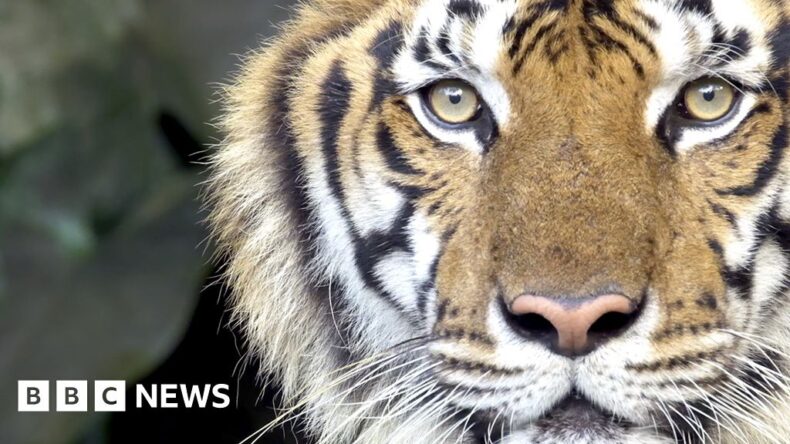Nepal has achieved the impossible feat of doubling its tiger population in the past 10 years.

Bringing back the tiger from extinction and setting an example for the world, Nepal has triumphed by successfully doubling the population of tigers. However, the cases of human-animal interaction have also risen.
Captain Ayush Jung who is a member of the team assigned the protection of big cats said, “There are two feelings when you come head to head with a tiger. Oh my God, what a majestic creature. And the other is, oh my God, am I dead?”
He has reported that he often sights Bengal tigers while patrolling the area in and around the dense bushes of Bardia which is the largest and the most undisturbed national park in Nepal’s Terai.
Captain Ayush further added, “Being assigned to tiger protection duties is an honour. It’s a privilege to be part of something that is really big.”
Nepal has taken a zero-poaching approach in order to protect the tiger population. Moreover, the caretakers of the national park are backed by military support and the buffer zones are under the constant inspection of anti-poaching units which monitor tiger movements in the area.
One such strip of land, the Khata corridor, links Bardia National Park with the Katarniaghat Wildlife Sanctuary across the border in India. However, there has been a significant rise in life-threatening challenges for citizens living around the borders.
Major Gautam a part of the team has also mentioned that the community lives in terror due to the rising population of tigers. He said, “The common area that tigers, prey species and humans share is so tight. There’s a price the community has paid for the world to rejoice in Nepal doubling its tiger numbers.”
As per the report, in the past 12 months, 16 people have been mauled in animal encounters in Nepal, whereas in the previous five years only 10 people had succumbed to it. This shows a significant rise in numbers.
The animal encounters usually occurred when people went into the buffer zone to graze cattle, and collect supplies or fruits and mushrooms. In some regions, the tigers have been reported to be venturing into the local villages, crossing the fences that were put up to separate the wildlife from residential areas.
One of the natives named Bhadai Tharu wears scars of animal attacks as medals. He is helping in the conservation of tigers and has been attacked by one a number of times. In 2004 he was attacked while cutting grass in the community forest near his village. He lost an eye.
Recalling the incident, Tharu said, “The tiger jumped at my face, making this huge roar. I was thrown back instantly. Then the tiger hopped back like a bouncing ball. I punched him with all my strength and cried out for help.”
He usually wears glasses to hide an eye that he lost that day. He said that he was anguished at his perils and kept asking himself where he went wrong but also acknowledged that tigers are endangered animals and it is our duty to protect them.
The Tiger population is plummeting constantly. About a hundred years ago, there were about 100,000 wild tigers spread across Asia but by the beginning of the new millennium, the number fell by 95% majorly because of hunting, poaching and loss of habitat.
There are now thought to be between 3,726 and 5,578 tigers left in the wild according to the International Union for Conservation of Nature.
In 2010, 13 countries pledged to double their tiger population, among which Nepal emerged successful. Spread over 968 sq km (374 square miles), Bardiya became a national park in 1988 to protect endangered wild animals. The region was once a royal hunting reserve. Only Nepal has so far reached the target.
The tiger population in Nepal has grown from 121 in 2009 to 355 in 2022. The big cats can mainly be found in five national parks across the country. Other species including rhino, elephant and leopard populations have also increased.













